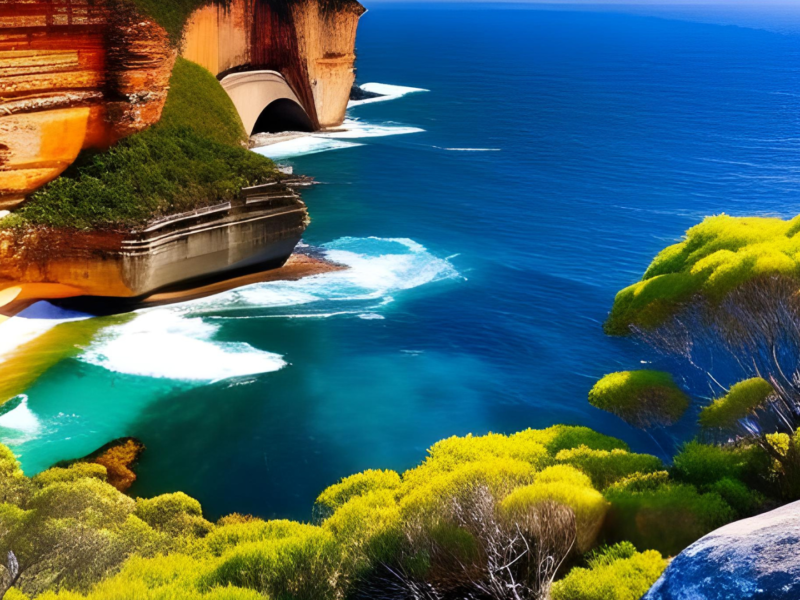Australia is a country that is as diverse as it is captivating. Its famous natural landmarks are a testament to the country’s unique geographical history and rich biodiversity. Each landmark tells a story, from the whispers of ancient cultures to the silent unfolding of natural phenomena over millions of years. These landmarks are not just points on a map, but destinations where you can immerse yourself in the grandeur of nature in Australia.
In this article, we delve into the heart of these famous natural landmarks in Australia. Whether you’re a seasoned traveler or a curious reader, discover the untamed beauty that lies in the heart of this remarkable land.
The Great Barrier Reef, Queensland
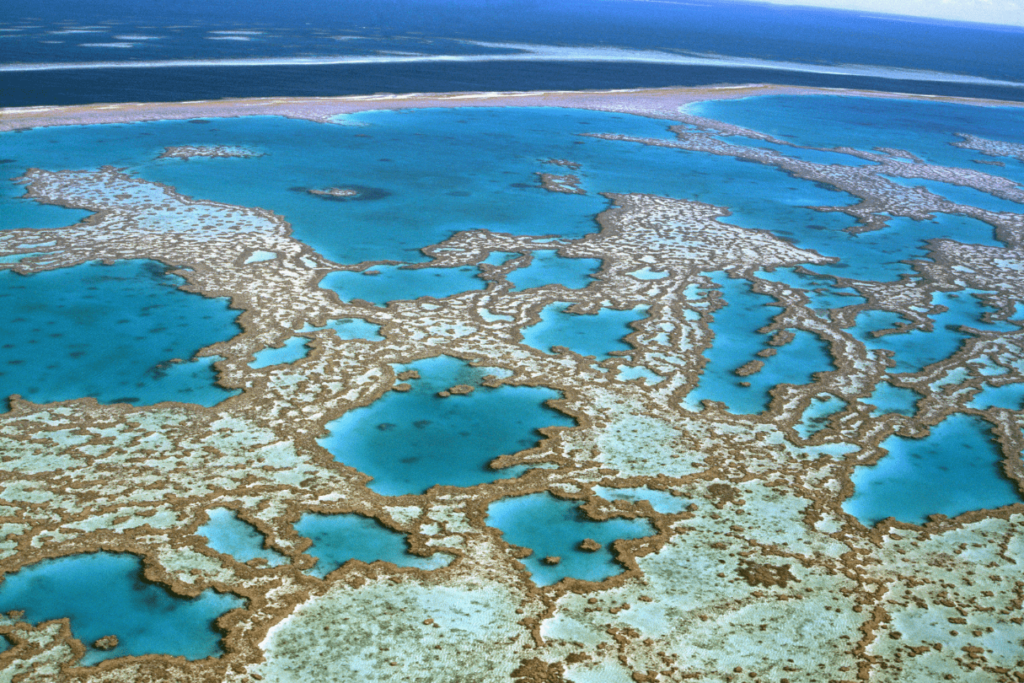
The Great Barrier Reef is a cherished natural treasure and holds the title of having the most expansive system of coral reefs in the world. This underwater marvel is a sanctuary for a vast array of aquatic creatures, boasting over 1,500 distinct fish species and 400 varieties of coral.
The reef’s exceptional biodiversity and ecological significance has earned it a spot on the UNESCO World Heritage list and among the seven natural wonders of the globe. Those who visit have the opportunity to immerse themselves in its beauty through snorkeling, diving, or taking an aerial tour of the breathtaking landscape.
Kakadu National Park, Northern Territory
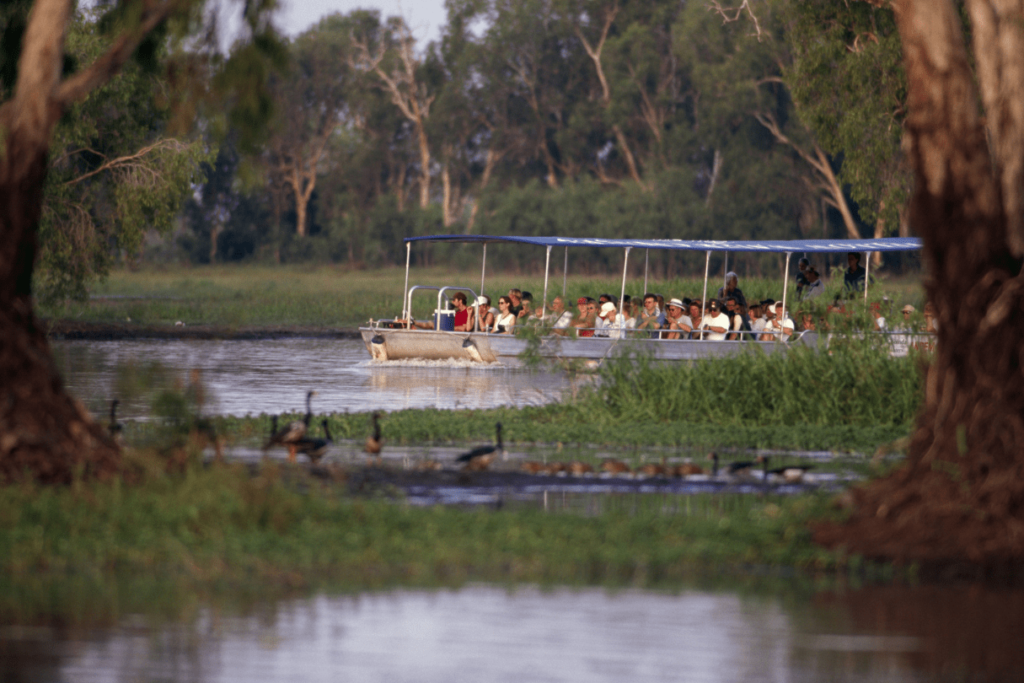
Kakadu National Park, located in Northern Territory, is a UNESCO World Heritage Site that is a haven for biodiversity. It is a sanctuary for a wide variety of plant and animal species, including a bird population of over 280 species.
The park is also a living museum of ancient rock art, with some pieces dating back more than 20,000 years. Visitors can explore the park’s cultural and ecological marvels by hiking along its many trails or on guided tours. However, it’s crucial to remember that the park is accessible only during the dry season, which typically spans from May to October.
Ayers Rock, Northern Territory
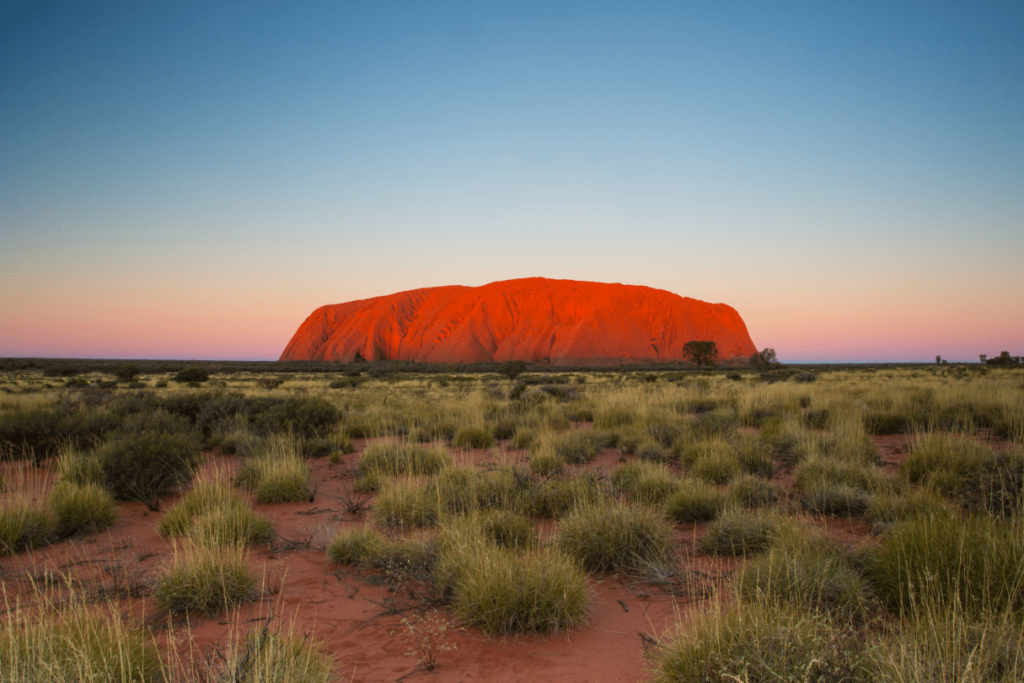
Uluru, also known as Ayers Rock, is a majestic sandstone monolith located in the Northern Territory of Australia. This natural marvel has profound spiritual significance for the indigenous Anangu people, who regard it as a holy site.
Recognized globally for its cultural and natural values, Uluru has been inscribed on the UNESCO World Heritage List. Visitors have the opportunity to delve into the rich cultural heritage of the site through guided tours, which provide insights into the traditions and stories associated with Uluru.
A walk around the base of the rock offers a chance to appreciate its grandeur and the surrounding landscape. However, it’s worth mentioning that climbing Uluru is not encouraged as a mark of respect for the Anangu people’s beliefs and customs.
Kings Canyon, Northern Territory
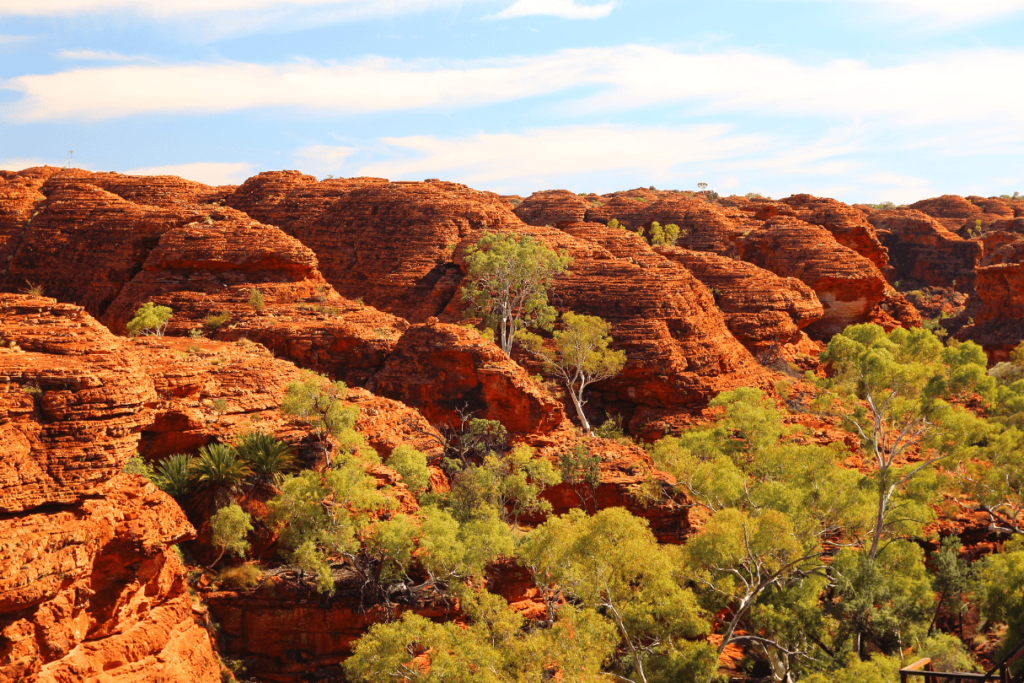
Situated in the Northern Territory, Kings Canyon is a breathtaking spectacle nestled within the confines of Watarrka National Park. The canyon is renowned for its majestic sandstone walls that tower above the landscape, offering awe-inspiring views.
Visitors have the opportunity to immerse themselves in the beauty of the canyon through guided tours or by embarking on one of the numerous hiking trails. However, it’s crucial to remember that the region can experience extreme heat during the summer, so it’s advisable to bring ample water and sun protection.
Ningaloo Reef, Western Australia
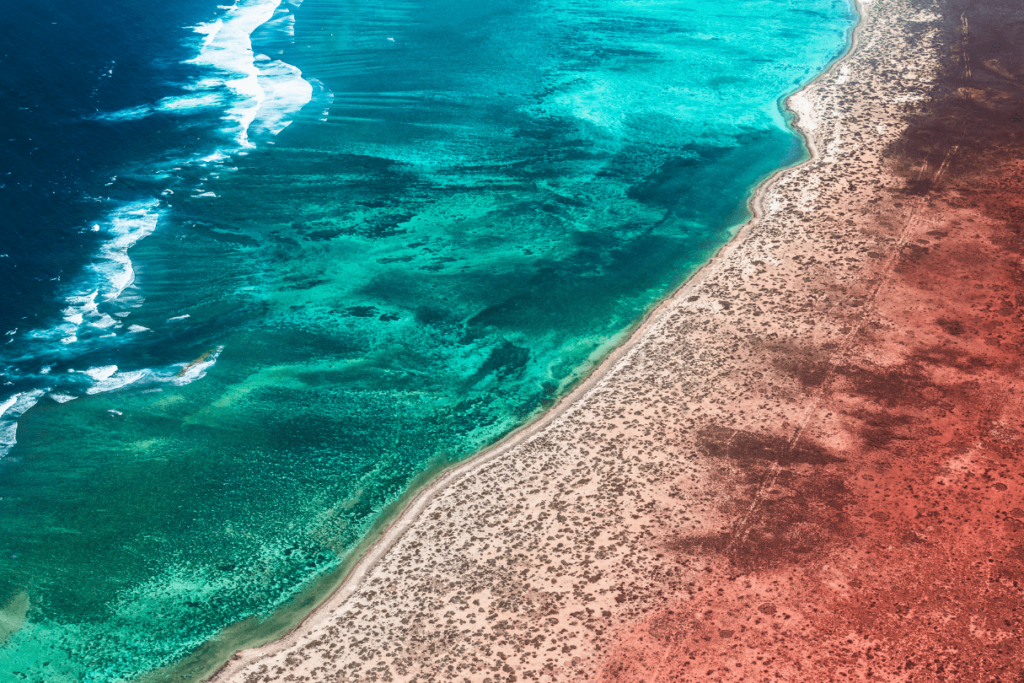
The Ningaloo Reef, a UNESCO World Heritage Site, graces the shores of Western Australia. This underwater paradise is teeming with a diverse array of marine life, including whale sharks, manta rays, and humpback whales. Visitors can plunge into the vibrant underwater world through snorkeling, diving, or even a glass-bottom boat tour.
The reef is also home to an impressive variety of corals and other marine invertebrates. It’s worth noting that the reef is less than half a kilometer offshore in some areas, making it easily accessible.
The Blue Lake, South Australia
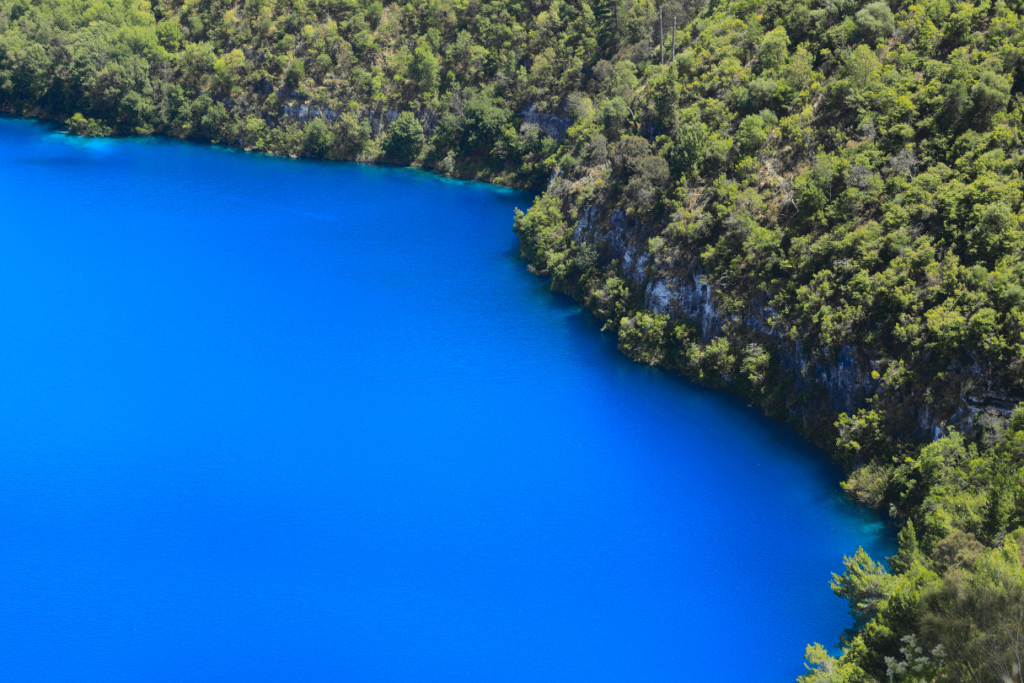
The Blue Lake, situated in Mount Gambier, South Australia, is a natural marvel known for its striking blue color. This vibrant hue is a result of a unique interplay between mineral composition and sunlight reflection.
The lake is one of four crater lakes in the Mount Gambier maar complex, and its color undergoes a fascinating transformation every November, changing to a deep turquoise color, which gradually returns to a more subdued blue from late February to March.
The exact cause of this phenomenon is still unknown, but it’s likely due to the warming of the surface layers of the lake during the summer, causing calcium carbonate to precipitate out of the solution and enabling microcrystallites of calcium carbonate to form, which results in the scattering of the blue wavelengths of sunlight.
Visitors can enjoy a scenic stroll around the lake or partake in a guided tour to delve deeper into its geological history. However, it’s important to note that swimming in the lake is not permitted.
Great Ocean Road, Victoria
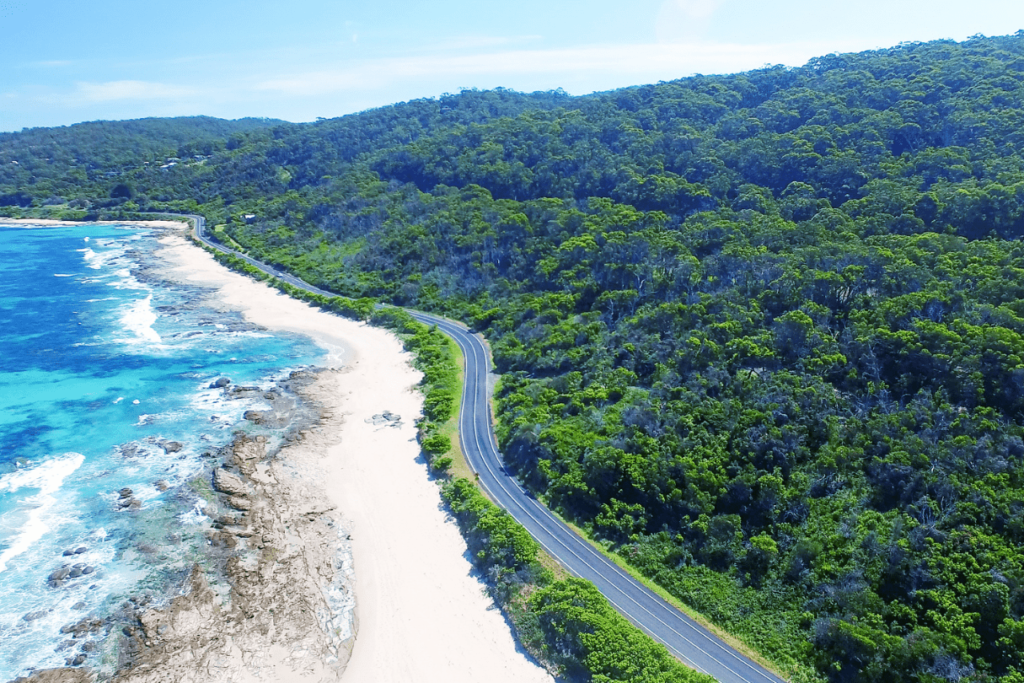
The Great Ocean Road, a picturesque coastal route that spans 243 kilometers along Victoria’s southeastern coast, is a quintessential Australian journey. This iconic drive offers breathtaking views of the ocean, cliffs, and unique rock formations.
The Twelve Apostles, a group of limestone stacks emerging from the ocean, are among the most renowned landmarks along this route. Other natural wonders such as the Loch Ard Gorge and the London Arch are also on this route.
The Loch Ard Gorge, part of the Port Campbell National Park, is named after the clipper ship Loch Ard that tragically wrecked near its shores in 1878. The London Arch, on the other hand, is a natural arch in the sea that offers stunning views.
Shark Bay, Western Australia
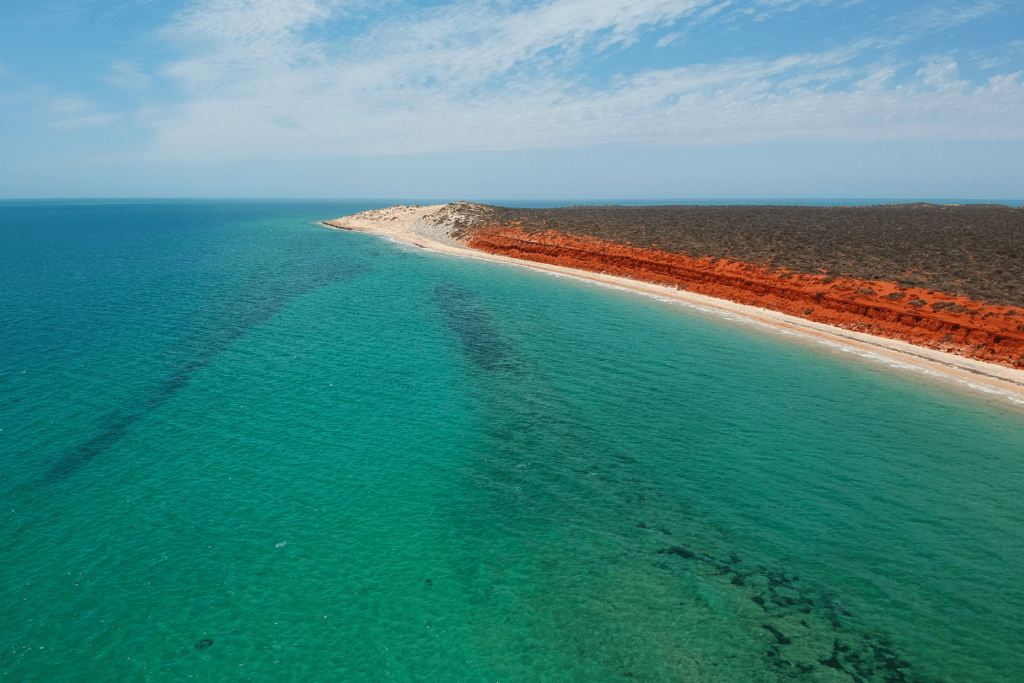
Shark Bay, a World Heritage Site in Western Australia’s Gascoyne region, is a haven for diverse marine life, including dugongs, dolphins, and sea turtles. The area is renowned for its unique natural features, such as the Hamelin Pool stromatolites, some of the oldest living organisms on earth.
Visitors can immerse themselves in the area’s beauty through guided tours or by snorkeling or diving in the crystal-clear waters. The bay is also home to a large population of dugongs and serves as a refuge for several globally threatened species.
The Pinnacles, Western Australia
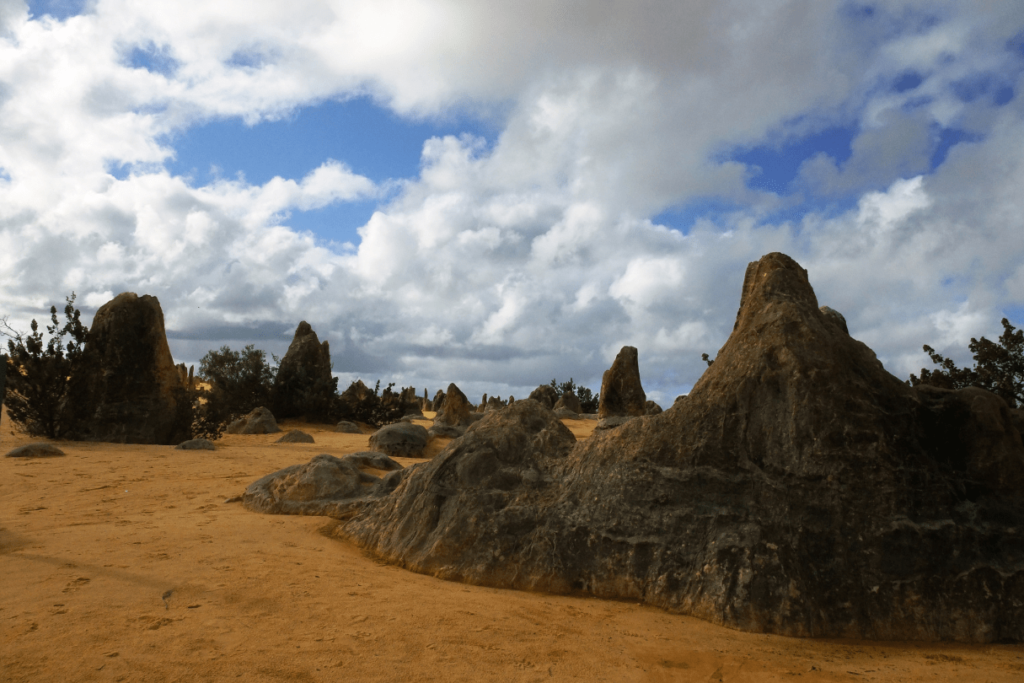
The Pinnacles, a collection of limestone pillars in Western Australia’s Nambung National Park, are a testament to the power of natural erosion over millions of years. These pillars, formed by the erosion of seashells and other marine organisms, offer a unique landscape for visitors to explore. Whether you choose to take a scenic drive or hike one of the many trails, the best time to visit is during sunrise or sunset, when the light creates a stunning contrast against the pillars.
The Twelve Apostles, Victoria
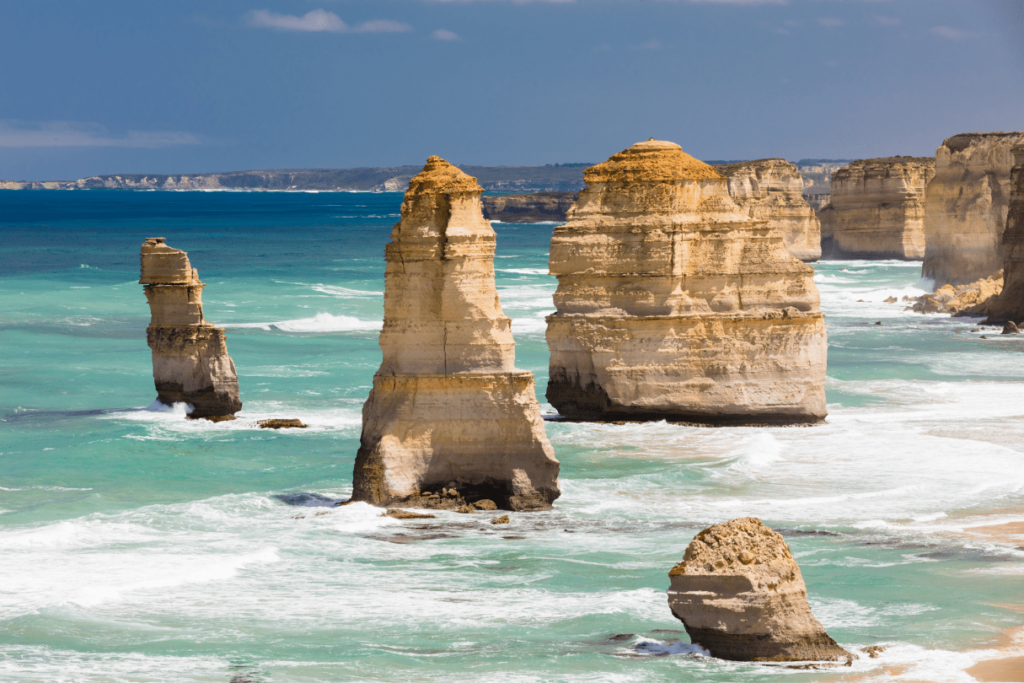
The Twelve Apostles in Victoria are a breathtaking sight to behold. These limestone pillars, rising majestically from the ocean along the Great Ocean Road, are a testament to millions of years of natural erosion. Visitors can immerse themselves in the beauty of this landscape by embarking on a scenic drive or hiking the numerous trails.
The most captivating views are during sunrise or sunset, when the light casts a mesmerizing contrast against the stacks. However, it’s crucial for visitors to prioritize their safety and adhere to the designated viewing areas.
Fraser Island, Queensland
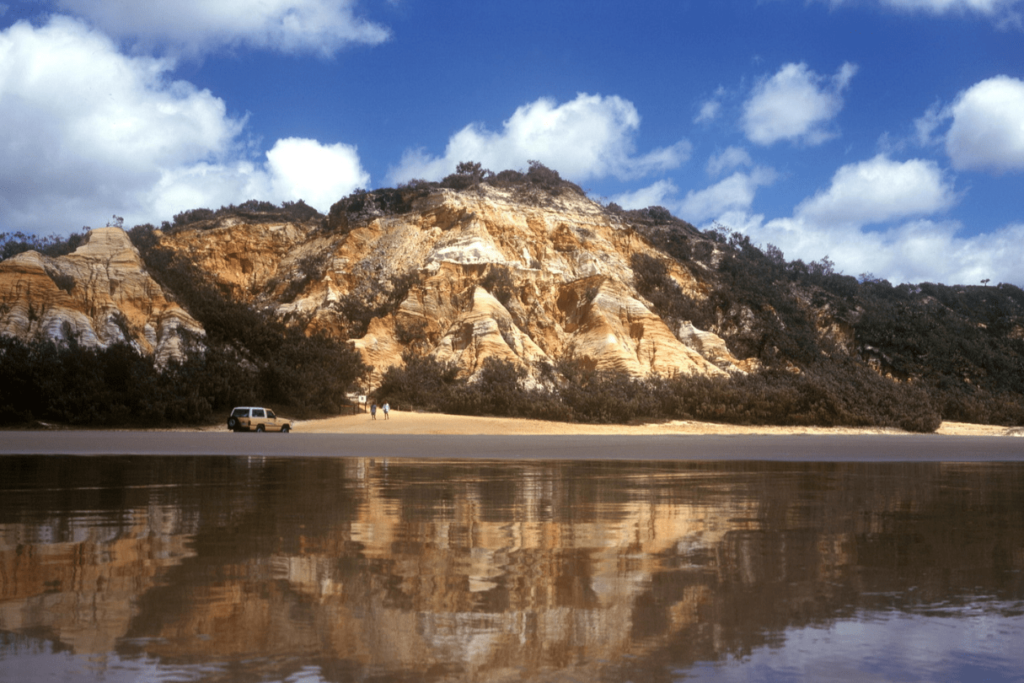
Fraser Island, also known as K’gari, is recognized as a UNESCO World Heritage Site and is the largest desert island in the world. Situated off the southeast Queensland coast, the island is a paradise of stunning beaches, pristine lakes, and verdant rainforests. Visitors can discover the island’s wonders through guided tours or beach drives. The island is a haven for wildlife, hosting dingoes, wallabies, and over 350 bird species.
Daintree Rainforest, Queensland
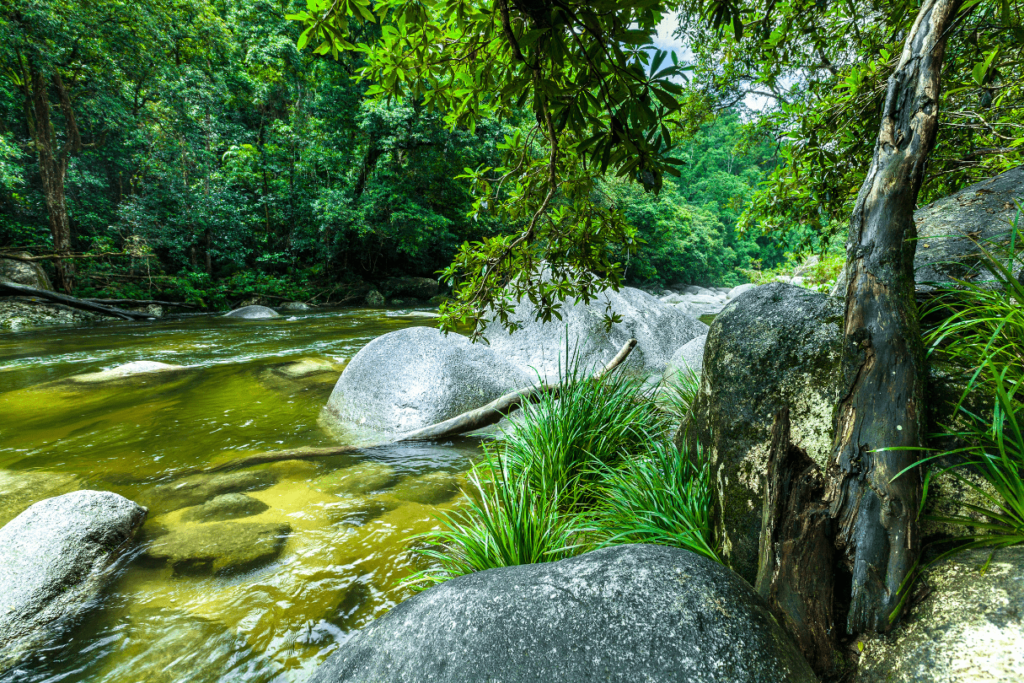
The Daintree Rainforest in Queensland is one of the world’s oldest rainforests and a UNESCO World Heritage Site. This ancient ecosystem is home to numerous plant and animal species, including the endangered cassowary. Visitors can explore the rainforest via guided excursions or by hiking its numerous trails.
The area also features quaint towns and villages, offering visitors the chance to enjoy local cuisine and explore shops and galleries. The Daintree Rainforest is a part of the largest continuous area of tropical rainforest in Australia, known as the Wet Tropics of Queensland.
It is home to approximately 3,000 plant species, 30 percent of Australia’s total frog, reptile, and marsupial species, 90 percent of the continent’s bat and butterfly species, seven percent of the country’s bird species, and over 12,000 insect species. The rainforest is also home to the Eastern Kuku Yalanji people, who won formal ownership of the land in 2021.
Lake Hillier, Western Australia
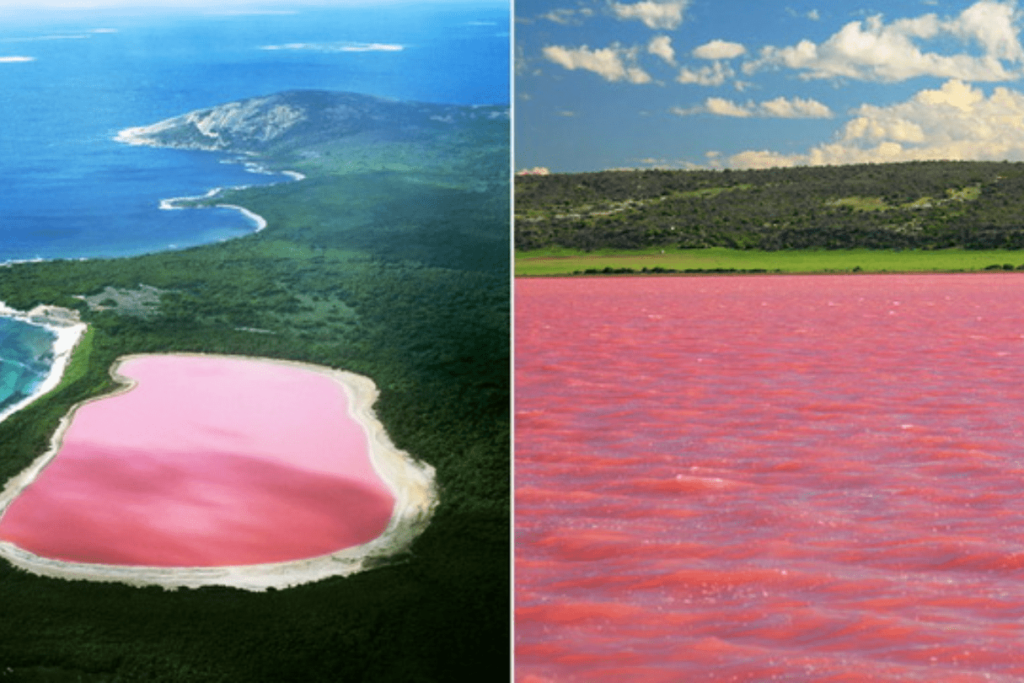
Nestled on Middle Island, Lake Hillier is a captivating natural spectacle known for its striking pink hue. This unusual coloration is the result of a special blend of algae and bacteria. While swimming is not permitted, visitors can appreciate the lake’s beauty from a bird’s eye view on a scenic flight or delve into its history and geology through an informative guided tour.
Glass House Mountains, Queensland
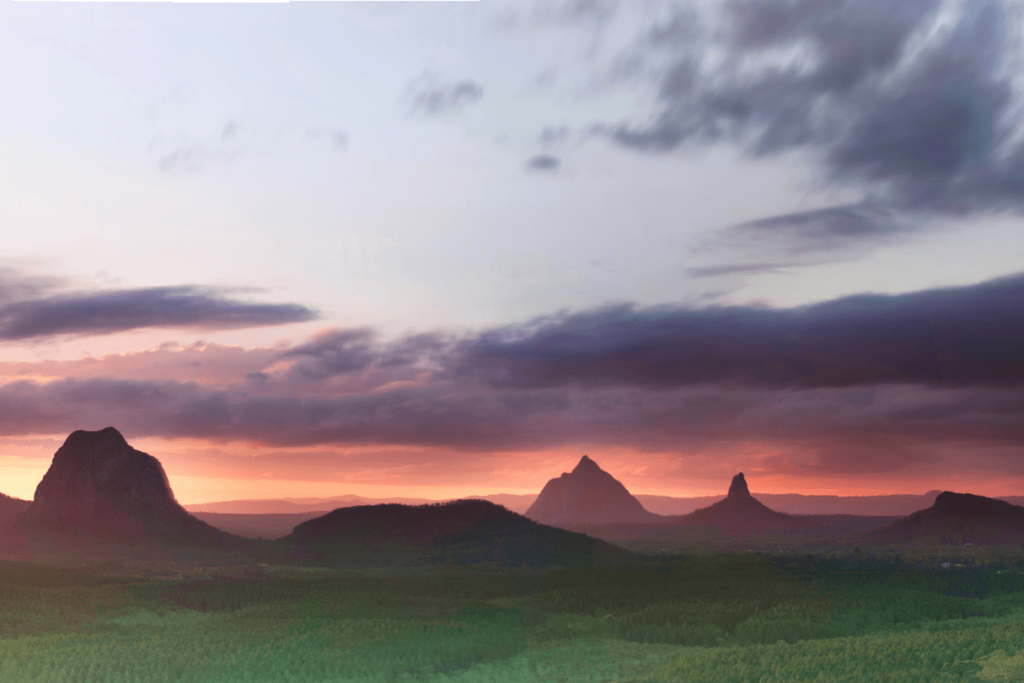
The Glass House Mountains are a collection of thirteen distinct hills that dramatically punctuate the otherwise flat landscape of Queensland’s Sunshine Coast. These geological wonders, rising sharply from the coastal plain, offer a unique and breathtaking vista.
MacKenzie Falls, Victoria
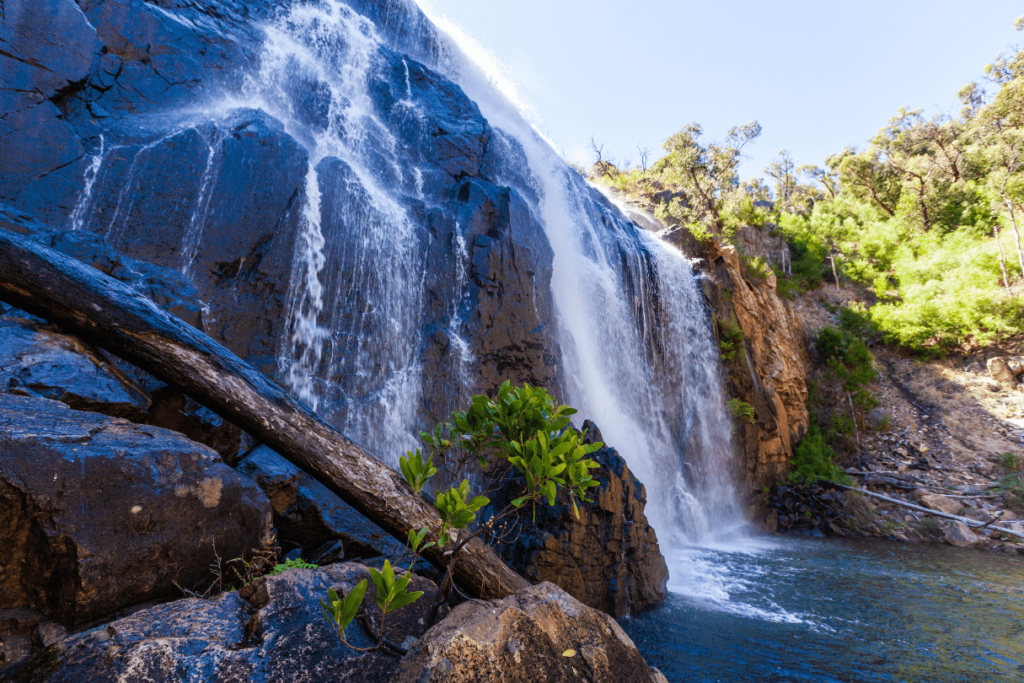
MacKenzie Falls, located within the Grampians National Park, is one of Victoria’s most magnificent cascades. Set against a backdrop of lush parkland, the falls’ mighty water cascade offers a genuinely awe-inspiring spectacle.

“Traveling is the art of collecting stories, not just souvenirs.”
